Green Beret and USAID Medic Recalls Vietnam and Laos
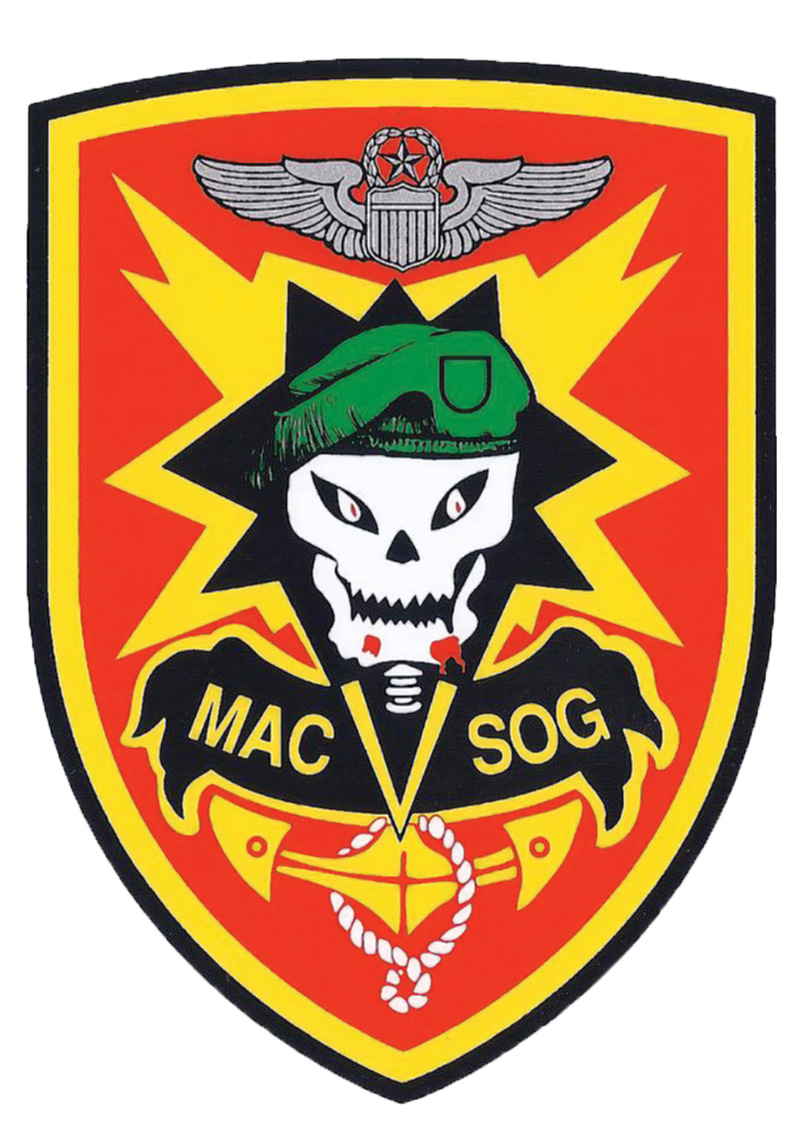
By Marc Yablonka
This article first appeared in the Hmong Daily News on March 29, 2023.
If you mention the name Steve Schofield to the scores of Hmong hilltribes in Wisconsin who were lucky enough to have gotten out of Laos before it fell to the Communist Pathet Lao forces in May 1975, no doubt you’ll encounter many who call him friend. But Schofield’s time in Indochina did not begin in Laos, where he worked with USAID [United States Agency for International Development] as a medic. He was also a Green Beret who served in Vietnam.
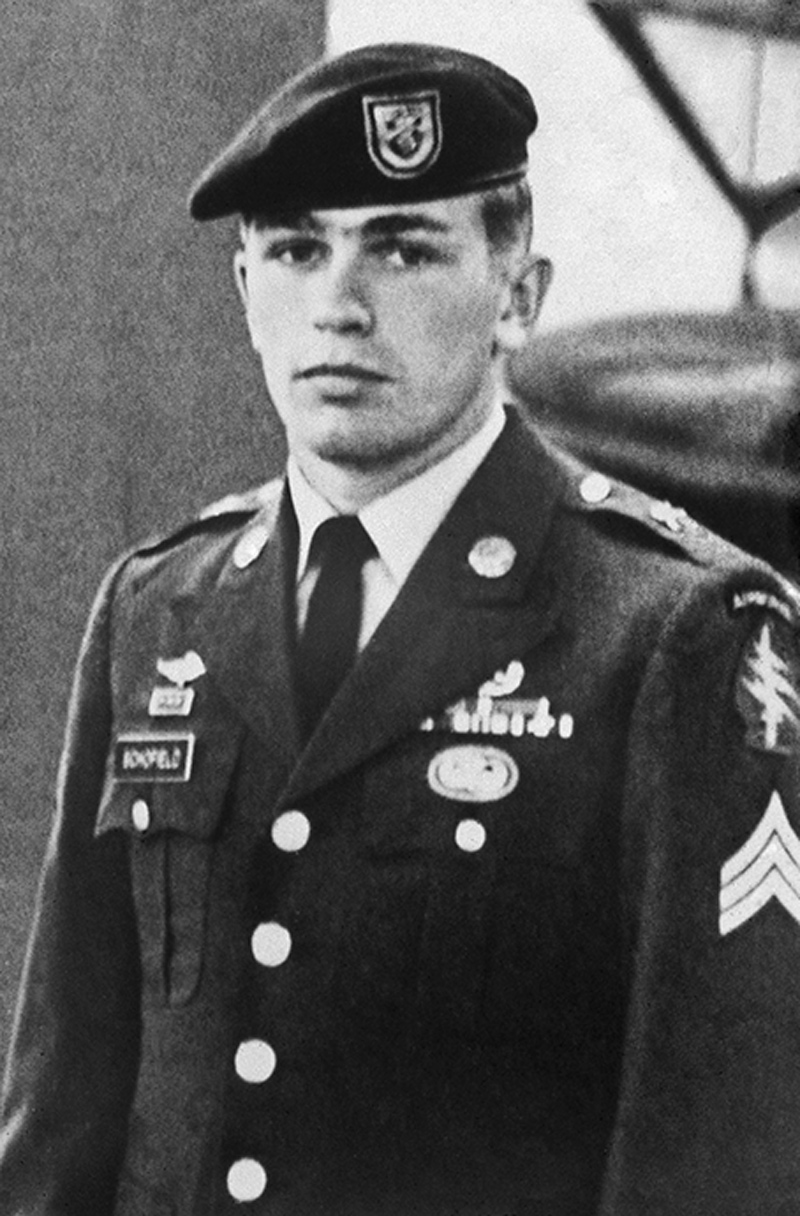
Steve Schofield in his Class A Army uniform. (Photo courtesy Steve Schofield)
“I was a replacement from Okinawa for a junior medic who had been wounded,” he said.
Schofield was assigned to Military Assistance Command, Vietnam [MACV]/Studies and Observations Group [SOG] Command and Control North [CCN] Marble Mountain from April to July 1968. He had several MOSs, but the one which tasked him with the most difficult training was 18D, Medic.
“Medics receive the most intensive training and are taught basic animal health, dental care, treatment of tropical disease, nursing care, surgery, to include amputation, and, of course, treatment of battlefield trauma. The team medic was responsible for the healthcare of his team and the indigenous troops that the Special Forces team trained and led,” Schofield said.
One can imagine what he experienced as a Green Beret medic. One firefight in particular stands out for him
“The most serious firefight occurred on a mission five miles inside Laos along the Ho Chi Minh Trail. I was wounded, another American Special Forces soldier was KIA. About 15 indigenous troops were KIA, and 20 more were wounded. Another SF on a medical evacuation chopper was listed MIA when it was shot down directly in front of me,” he remembered.
Schofield’s time in Vietnam was coming to a close, but his time as a Green Beret was not quite over yet.
“After returning to Okinawa from Vietnam, I did one more training mission in the Philippines. I accepted the offer from USAID, was discharged, and returned to Chicago for six months, awaiting (another) top secret security clearance,” he recalled.
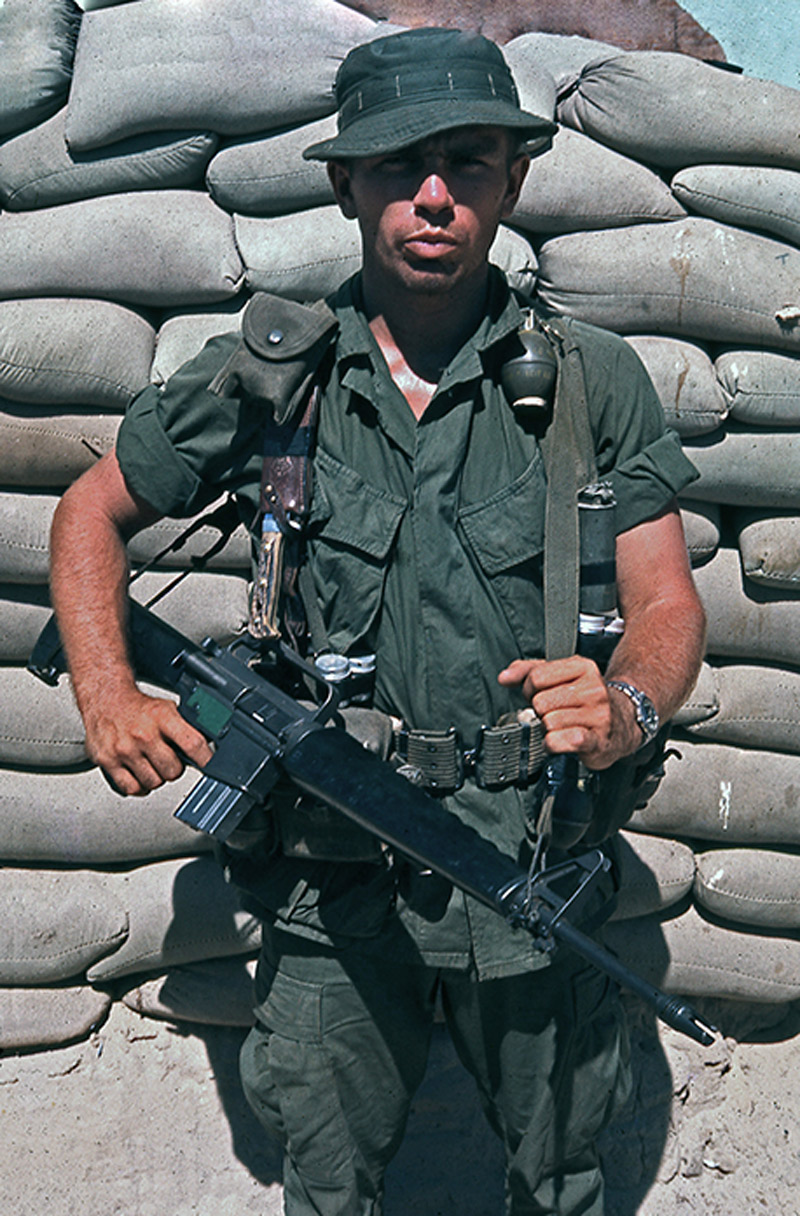
Steve Schofield in Vietnam. (Photo courtesy Steve Schofield)
Schofield was Laos bound in September 1969.
“I went on to Vientiane for four days, and then to Sam Thong (LS [Lima Site]-20) where I was based for six months. Sam Thong fell in March 1970, and I was then based at Ban Xon until Laos fell in May 1975,” he said.
Schofield’s average days as a USAID medic were arduous, long, and above all, dangerous.
“My every-day responsibilities,” he said, “were to train, deploy, and supply USAID, military and Royal Lao government medics.”
But that’s not where his duties ended.
“My top-secret duty was to provide search and rescue for downed US and allied air crews. The medics were stationed in remote villages all over Military Region II, which was only accessible by air,” Schofield said.
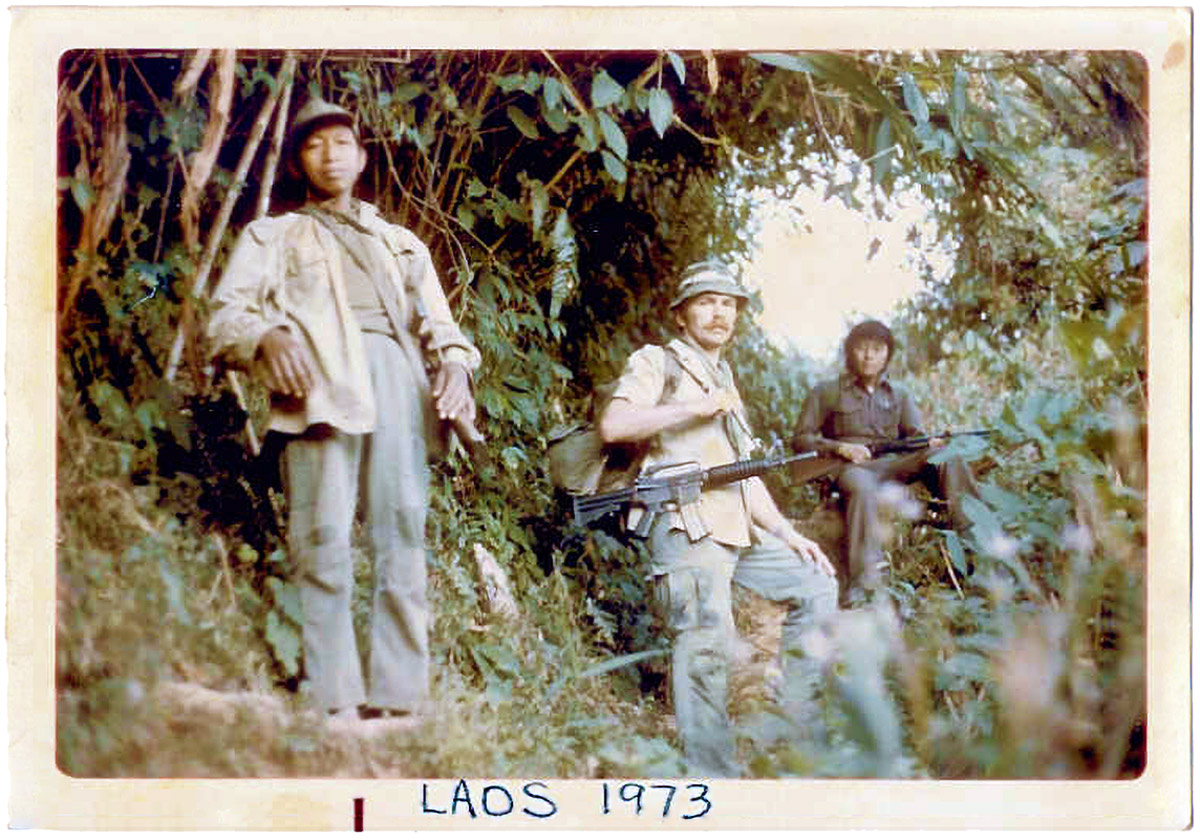
Steve Schofield with military guide (left) and Ly Chay, Chief Medic (right). (Photo by Father Lucien Bouchard. Courtesy Steve Schofield)
Most of the time, Schofield was flown from site to site by CASI (Continental Air Services, Inc.), occasionally Air America, and towards the end of the war, Arizona Air, which flew Bell Jet Ranger helicopters. No matter which airline flew him, his admiration and appreciation for the pilots remains very high.
“All the pilots were outstanding. We could not have accomplished our missions without them,” he said.
Schofield’s admiration for several of the major personages of the secret war in Laos remains high as well. Pop Buell was one of them.
Steuben County Indiana farmer, Edgar “Pop” Buell was a humanitarian aid worker, becoming an agricultural adviser for the IVS (International Voluntary Services) organization in Laos after his wife passed away in 1958.
“Pop and my wife and I became great friends. I was his medic and we stayed in touch until his death. I would always visit with him when I was in Bangkok, on business after Laos. He was one of the great Americans I met in Laos,” said Schofield, who worked with Buell at both Sam Thong and Bon Xon.
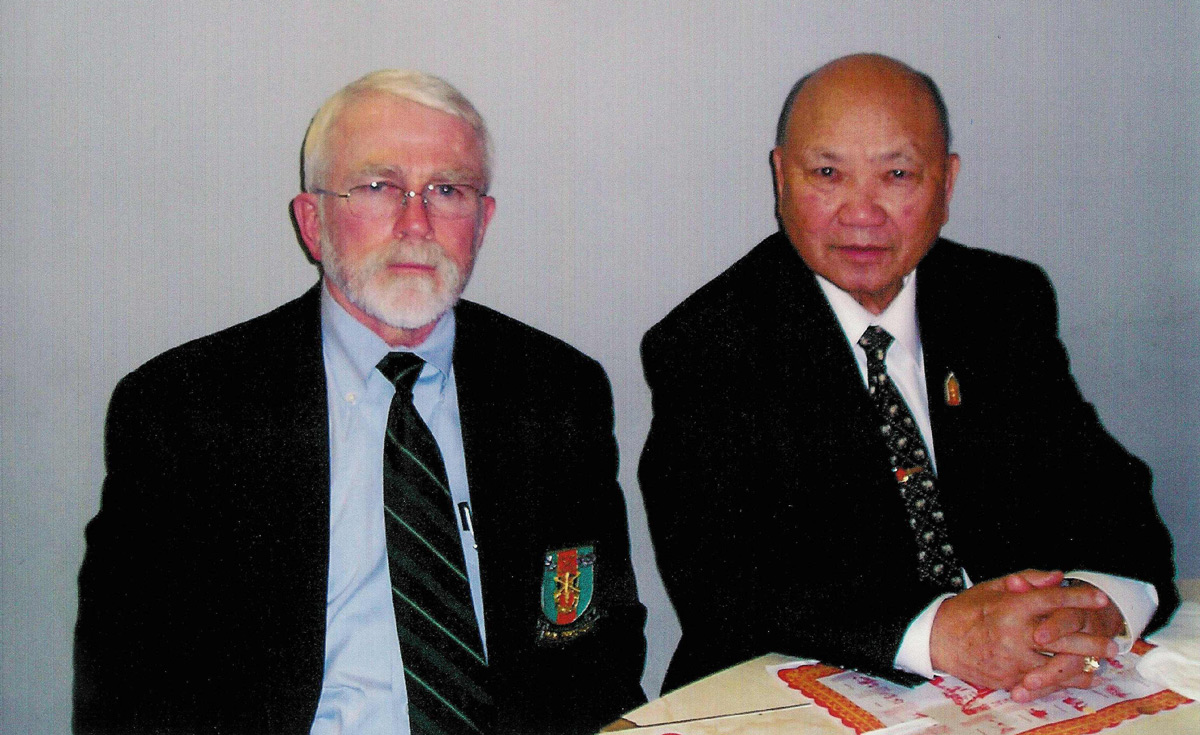
Steve Schofield with General Vang Pao in 2000. (Photo courtesy Steve Schofield)
He also interacted with Royal Lao Army Maj. Gen. Vang Pao.
“Of course, I met Major General Vang Pao. I wrote about our first meeting in my book Secret War in Laos: Green Berets, CIA, and the Hmong, he said.
“[CIA operative] Anthony Poshepny [aka Tony Poe] was a good friend,” Schofield said.
“Tony was a straight shooter with no pretensions or illusions about what we were doing in Laos: Killing communists!” he wrote.
Another legend among the Hmong in Laos during the secret war was Catholic priest, Father Lucien Bouchard, or “Father B,” as he is still affectionately known by the Hmong and Americans who worked with him.
“I would send USAID air craft to pick up Father B. I worked with him to provide medicines for the Leper villages. We became great friends and he spent his last night in Laos at my house. He would always visit us when on home leave from Indonesia,” Schofield recalled.
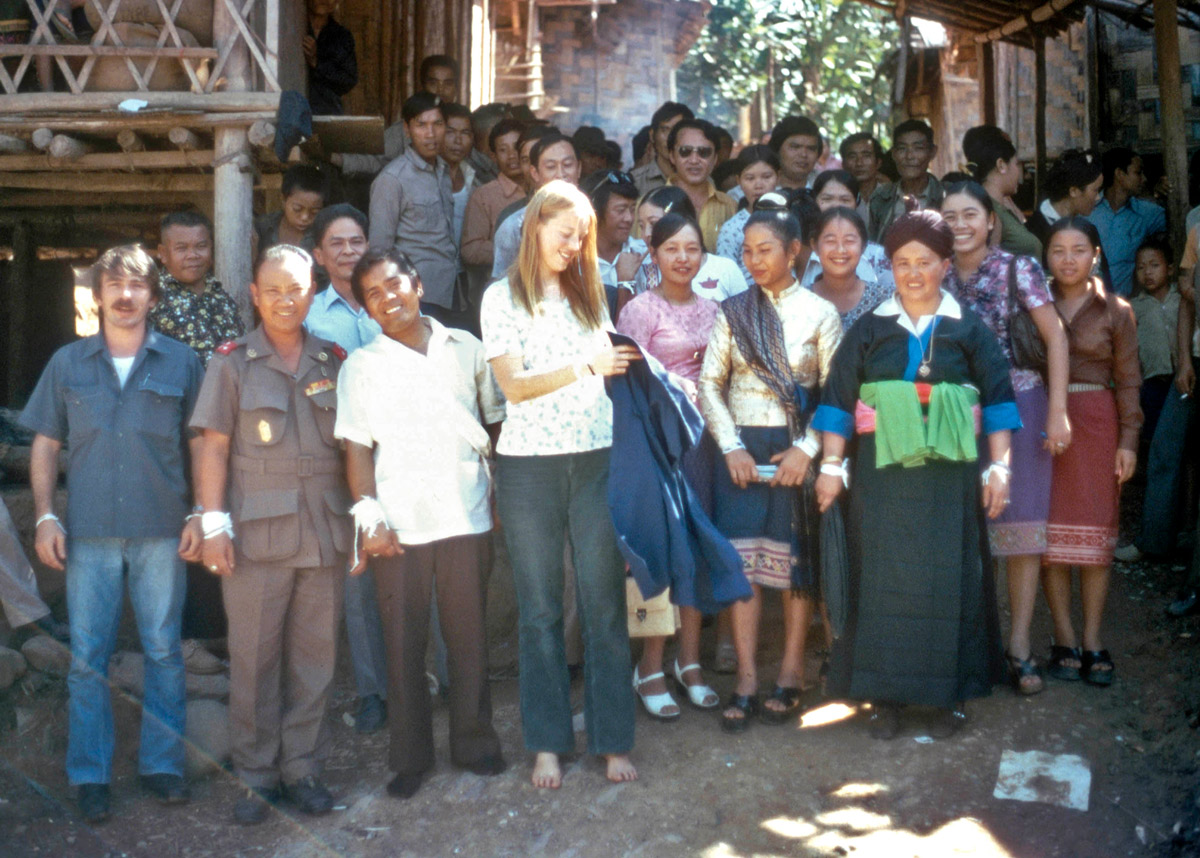
Steve Schofield (left front) next to General Vang Pao at nurse’s wedding in Bon Xon. (Photo courtesy Steve Schofield)
Schofield also reflected on the effectiveness of the Hmong who fought in the SGUs [Special Guerilla Units].
“The Hmong soldiers were very good, considering their youth, minimal training, and the fact that they were up against hardcore North Vietnamese Army soldiers,” said Schofield. “The airmen were fantastic aviators who got right down in the trees with the NVA.”
Scofield’s admiration for the Hmong soldiers and pilots extends to the Hmong people as a whole.
“The Hmong for the most part are strong, honest, hard-working, extremely loyal Americans who are a credit to the US,” he feels.
Schofield’s connection to the Hmong did not cease when he left Laos in 1975 at war’s end.
“I have many Hmong friends and often attend their ceremonies, new year celebrations, weddings and funerals,” he said.
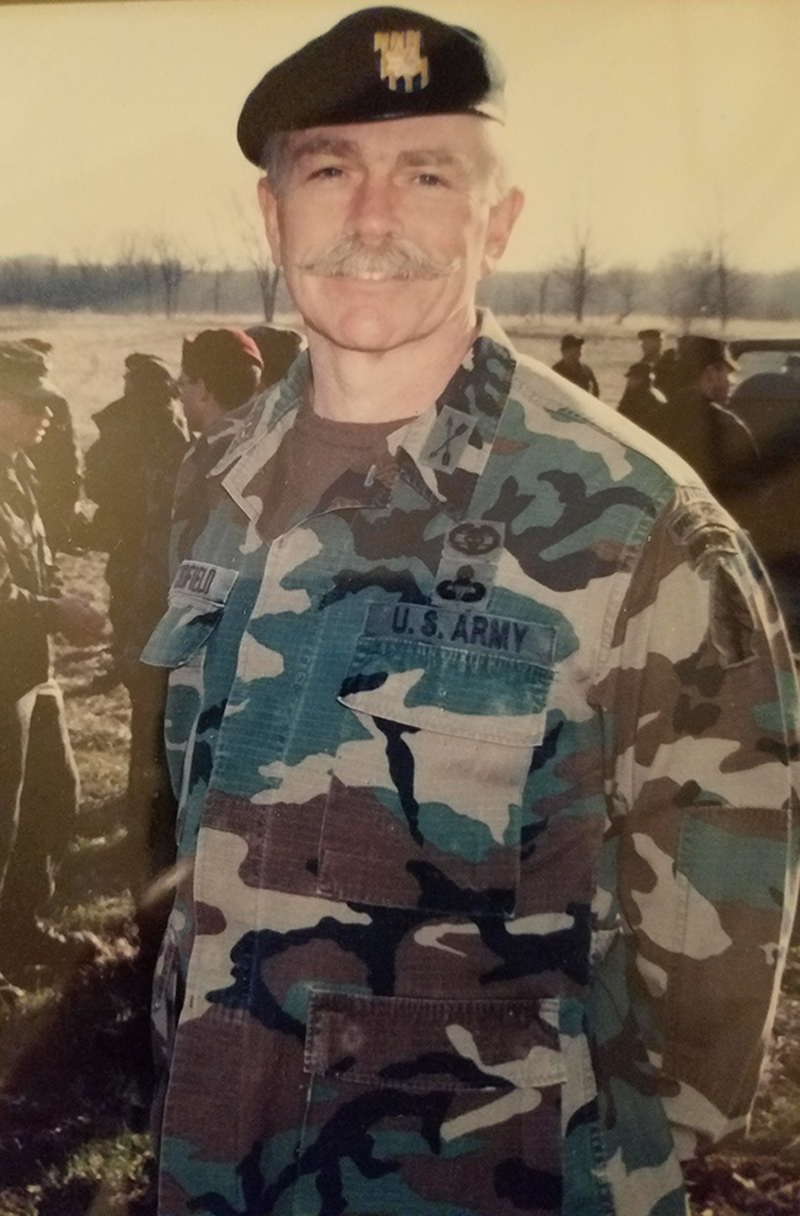
Steve Schofield just before he retired in 1995. (Photo courtesy Steve Schofield)
His deep connection to Hmong people even led in 2006 to the erecting of a memorial in the sleepy town of Sheboygan, Wisconsin — a town which boasts 6,000 Hmong inhabitants — The Lao, Hmong American Veterans Memorial.
“I first broached the subject to a group of Hmong veterans a few years before the Memorial was completed. I suggested that it be similar to the Vietnam Memorial because there were no official records of those KIA in Laos,” Schofield remembered.
He felt they should start gathering the names of those lost before all their relatives were gone.
“I made a video to educate the US population about the sacrifices of the Hmong, raised money, got support from US veterans’ groups, assembled the names of the US casualties in Laos, and even worked on the construction of the Memorial.” Schofield said.
Steve Schofield memorialized the Hmong and his time in Laos in his book Secret War in Laos: Green Berets, CIA, and the Hmong.
“I wrote the book to let my friends and relatives know about my role in Laos, tell the story of the Hmong in America, and, at the urging of SF friends who said we needed to record our history,” he says.
In the book he minces no words as he reflects back on 1975, when Laos fell to the Pathet Lao.
“To this day I am ashamed of what the US government did to the hill tribes of Laos. They were abandoned to the genocide of the Pathet Lao and North Vietnamese Army, I am especially ashamed of the abandonment of the Hmong, who fought on the side of the US and paid a very high price for their loyalty,” he wrote
Editor’s Note: Read “Preserving the history of America’s ‘secret war’ in Laos” on NBCNews.com by Saqib Rahim, who writes about the relatively new Legacies Library which documents online the CIA-led campaign that made it the most bombed nation in history. The online library is a project run by Legacies of War, a small group of Washington, D.C.-based volunteers whose mission is to keep the secret war from being lost to time.
Additionally, the moving PBS documentary The Hmong and the Secret War explores questions about the Secret War in Laos during the Vietnam War and the circumstances that brought the Hmong to America.
ABOUT THE AUTHOR — Marc Yablonka is a military journalist whose reportage has appeared in the U.S. Military’s Stars and Stripes, Army Times, Air Force Times, American Veteran, Vietnam magazine, Airways, Military Heritage, Soldier of Fortune and many other publications. He is the author of Distant War: Recollections of Vietnam, Laos and Cambodia, Tears Across the Mekong, and Vietnam Bao Chi: Warriors of Word and Film.
Between 2001 and 2008, Marc served as a Public Affairs Officer, CWO-2, with the 40th Infantry Division Support Brigade and Installation Support Group, California State Military Reserve, Joint Forces Training Base, Los Alamitos, California. During that time, he wrote articles and took photographs in support of Soldiers who were mobilizing for and demobilizing from Operation Iraqi Freedom and Operation Enduring Freedom.
His work was published in Soldiers, official magazine of the United States Army, Grizzly, magazine of the California National Guard, the Blade, magazine of the 63rd Regional Readiness Command-U.S. Army Reserves, Hawaii Army Weekly, and Army Magazine, magazine of the Association of the U.S. Army.
Marc’s decorations include the California National Guard Medal of Merit, California National Guard Service Ribbon, and California National Guard Commendation Medal w/Oak Leaf. He also served two tours of duty with the Sar El Unit of the Israeli Defense Forces and holds the Master’s of Professional Writing degree earned from the University of Southern California.
Leave A Comment